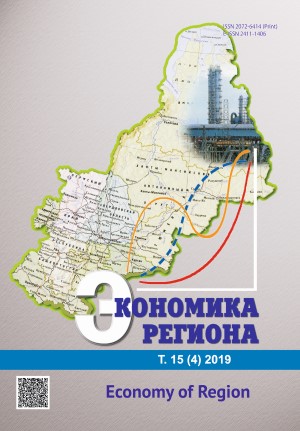РОССИЙСКОЕ ЭКОНОМИЧЕСКОЕ ПРОСТРАНСТВО: СТРАТЕГИЧЕСКИЕ ТУПИКИ
Russian Economic Space: Strategic Impasses
Author(s): Pavel Aleksandrovich MinakirSubject(s): Economy
Published by: Институт экономики Уральского отделения Российской академии наук
Keywords: strategy; concepts; theory; regional policy; space; regions; agglomerations; specialisation; trunk transport; growth pole; goals; fundamental conflict
Summary/Abstract: In 2014, the Russian government adopted a law on strategic planning. In the period from 2015 to 2017, regional development strategies were shaped in accordance with this law. Further, in the period from 2018 to 2019, the government has been developing the national strategy of spatial development, which is clashing with both regional strategies and fundamental principles of the economic theory of spatial development. The article considers the set of such conflicts and assesses their possible consequences. I use the method of comparative analysis, examining how special (for Russian conditions) and theoretical models of spatial development respond to the decisions proposed by the strategy. The strategy includes various concepts that aim to maximize agglomeration effects, identify priority regions, create homogeneous macro-regions, suppress economic and social heterogeneity, and maximize the regions’ competitiveness. I demonstrate that in the strategy, none of the concept’s fragments achieve the proposed decisions correlating with canonical theoretical concepts (the concept of placement of firms and industries, models of spatial development and growth, concepts of spatial diversity and inequality, principles and forms of regional state policy). The strategy identifies the directions of spatial development, which formally correspond to the traditional theoretical models of regional development. However, these directions either are implemented within the inertial development of the spatial system of the Russian Federation, or are modified according to Russian economic and geographical space, while the strategy does not consider these modifications. This leads to a conflict between the goals declared in the strategy and the real problems of the Russian economic space’s functioning in terms of socio-economic inequality, and maximized effects of agglomeration, regional rents, and the regions’ competitiveness. Additionally, I pay particular attention to the problem of shaping the target for strategic spatial planning. The paper has demonstrated that a productive strategy is possible in case of considering the economic space as a system of economically interacting regions, and not an additive set of administrative regions.
Journal: Экономика региона
- Issue Year: 15/2019
- Issue No: 4
- Page Range: 967-980
- Page Count: 13
- Language: Russian

